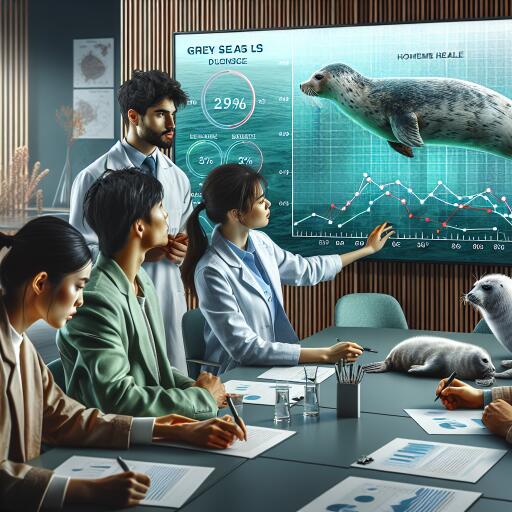
Scientists Urge Revision of Grey Seal Hunting Quotas to Safeguard Baltic Population
In recent findings by a team of ecologists from the University of Gothenburg, evidence has been presented that the current grey seal hunting quotas in the Baltic Sea—set at approximately 3,000 animals annually—could significantly endanger the species’ survival. These insights, gleaned from a comprehensive study incorporating historical hunting data and future climate change projections, shed light on the precarious balance between human activities and marine ecosystem health.
The grey seal population in the Baltic Sea has faced various threats over the past century, including aggressive hunting practices and contamination by harmful toxins like PCBs. From a thriving community of over 90,000 seals at the turn of the 20th century, numbers dwindled to a mere 5,000 by the 1970s. However, through conservation efforts and a decrease in hunting, the population has seen a partial recovery, now standing at approximately 55,000 individuals.
Baltic grey seals are unique, both genetically isolated from their Atlantic counterparts and adaptable in their breeding habits—capable of giving birth on both drift ice and land. This adaptability has been beneficial, but as climate change reshapes their environment and reduces available prey fish, new challenges emerge.
Utilizing sophisticated mathematical models, the research team assessed the impact of various scenarios on the grey seal population. These took into account different levels of hunting pressure, changes in food availability, and the effects of diminishing sea ice. The results were unequivocal: sustaining the current hunting quota invariably leads to a decline in seal numbers, even under the most favorable environmental conditions.
“Our models indicate a dire need to reassess the present hunting quotas. To ensure the continued recovery and viability of the grey seal population in the Baltic, it’s imperative that the annual cull does not exceed 1,900 individuals,” explained the lead scientist of the study. “And should other environmental stressors worsen, this figure may need further revision downward.”
The finding comes against a backdrop of a longstanding agreement among Baltic Sea nations to facilitate the grey seal’s recovery, following near catastrophic declines due to past hunting and pollution. An enhanced understanding of the grey seals’ current situation is facilitated by detailed historical records of seal hunting alongside contemporary environmental monitoring that tracks the seals’ numbers, health, and reproduction rates.
One intriguing aspect of the study is the highlighted advantage of sea ice as a breeding platform for grey seals. Pups born on ice have better survival prospects thanks to the dispersion of mothers and pups over a wider area, reducing the risks from predators, human disturbance, and disease transmission common in denser land colonies.
As the grey seal population has increased, so too have the tensions with regional fisheries, leading to additional licensed hunting quotas in Finland and Sweden from 2020, potentially increasing the annual cull to over 3,000 animals. This marks a shift from previous practices focused on removing individual problem seals, which had negligible impact on the overall population.
“The introduction of licensed hunting represents a significant shift and poses a substantial threat to the grey seal’s future in the Baltic Sea,” stated a prominent ecology professor involved in the study. “While managing human-seal conflicts is essential, it’s critical that these efforts do not compromise the survival of this recovering population.”
This body of research underscores the delicate balance of human intervention in natural environments and the need for continuous adaptation of management practices to safeguard endangered populations. The evolution of hunting quotas, in response to changing environmental conditions and improved understanding of grey seal ecology, represents a pivotal aspect of sustainable conservation efforts in the Baltic Sea.





Leave a Reply